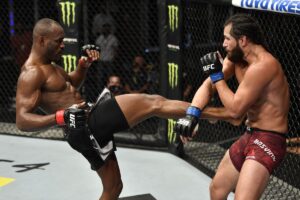Trends and Takes: Week 6
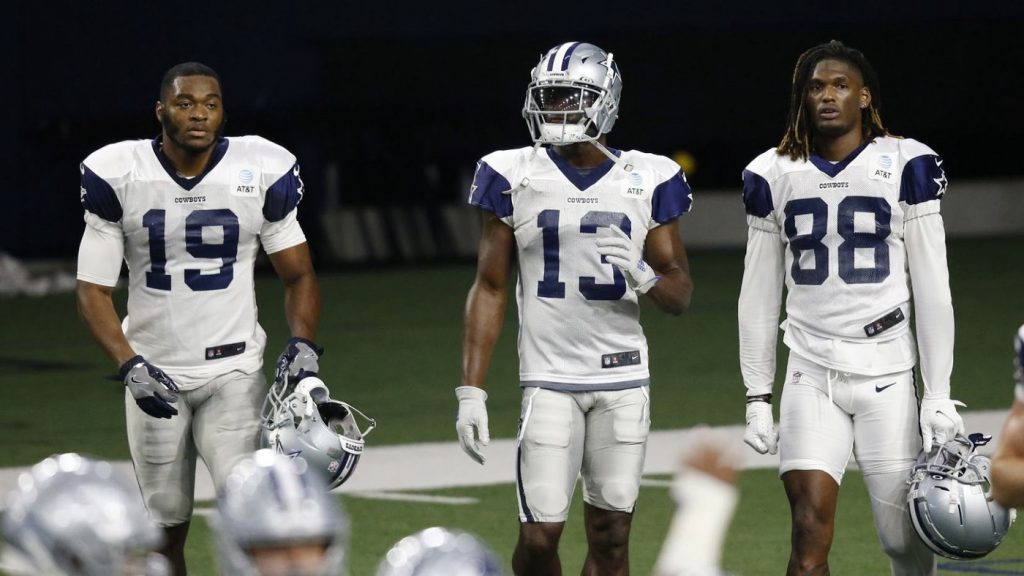
Written by Timothy Lewis (@TrendsAndTakes) — October 15th 2020
The fifth week of the 2020 NFL season has come and gone. In other words, we have a five-game sample size to spot trends and develop takeaways. Welcome to season four of this column! If you’re not familiar, I use this time to identify the patterns that track sometimes obvious, sometimes under-the-radar, fantasy football assets. This year, I will be offering additional Buy/Sell/Drop/Hold criteria. Statistics are courtesy of advanced analytics goldmine, PlayerProfiler, and trusty dusty Pro-Football-Reference.
Joe Mixon
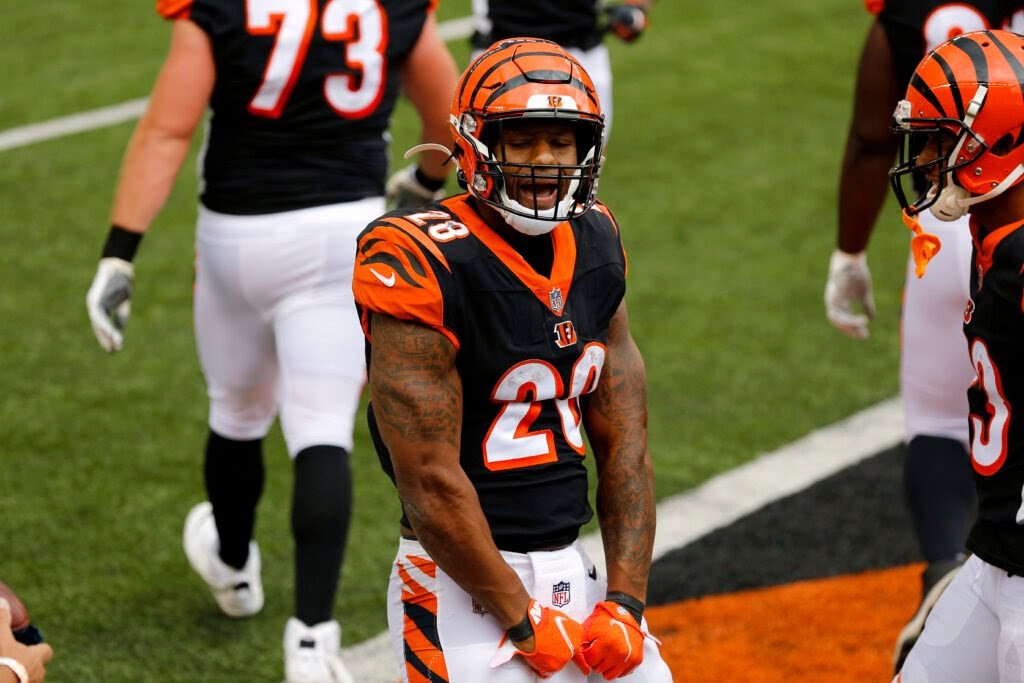
The Trends:
85.5% Opportunity share (2nd in NFL)
114 routes run (6th in NFL among running backs)
101 carries (2nd in NFL)
The Takes:
It hasn’t been all sunshine and rainbows for Mixon investors. The fourth year back out of Oklahoma has only found paydirt in one of four games. That one game included three touchdowns — a week winning performance, surely — but still only good for one week.
Drafting Mixon was a simple process. In today’s NFL, it’s almost mandatory that a workhorse back be just as proficient as a receiver as they are rushing the ball (looking at you, Derrick Henry). Mixon fulfills that criteria. To be a first round fantasy asset, a player must have substantial and consistent usage. Mixon checks that box as well.
The only reason the 25-year-old Bengal wasn’t going until the back half of the first round is due to his team context. Having spent the number one overall pick on Joe Burrow gave room for optimism, but also pause. What identity would this Cincinnati team take?
The reality with the Bengals is that there are moving pieces. Many of the players on offense this year will not carry over, or will have a different role come 2021. That level of uncertainty, along the flat out absence of continuity, makes for an offense struggling to get into scoring position.
There is light at the end of the tunnel, fortunately. Through five weeks, the Bengals offensive line has been hammered by imposing defensive fronts. In the one game they weren’t (vs Jacksonville), Mixon exploded. While Geovani Bernard has taken a sprinkling of touches, Mixon investors have no right to complain. The volume has been there, even if the efficiency is lagging.
I’m chalking the inefficiency up to a difficult starting schedule. Above all else, there is the commitment demonstrated by this coaching staff to feature Mixon. With at least 25 touches in the last 4 games, we can safely expect a low-end RB1 floor going forward, and a ceiling among the league’s highest when the stars align.
The Verdict: The Bengals face the Giants, Dolphins, Cowboys, and Texans in 4 out of their last 5 games (weeks 11–15). That soft-ball schedule that could mean Joe Mixon is on a large percentage of league-winning lineups. BUY.
Jonathan Taylor
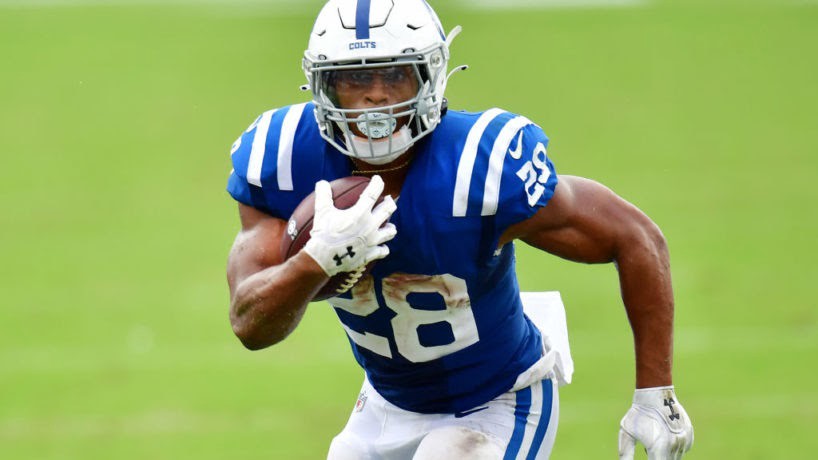
The Trends:
77 Carries (9th in NFL)
51.7% Opportunity Share (27th in NFL)
48 Yards Created (40th in NFL)
46.8% Shotgun Carry Rate (19th in NFL)
The Takes:
Jonathan Taylor was considered the best running back talent in the 2020 draft by pundits, film grinders, and SPARQ enthusiasts alike. In his time at Wisconsin, the 5’10”, 225 lb. Taylor put up prodigious numbers, eclipsing 2,000 rushing yards in two out of three collegiate seasons.
With an iron-clad bill of health, and eye-popping athleticism, the Colts’ second selection of the second round has been billed as a can’t-miss player and sure-fire hit at the NFL level. All that ever stood in his way from a 2020 breakout was proven-1000-yard-rusher, Marlon Mack.
With Mack shelved indefinitely due to an extremely unfortunate achilles tear, the spotlight should have come on instantly. Instead, it appears we have a different light occupying our gaze: A check engine light.
So far, Indianappolis seems confused about its overall identity. Last season, it was a simple strategy: Hide Jacoby Brissett behind a fierce offensive line, a hard-nosed running game, and well-schemed quick-hit passes. With the addition of Phillip Rivers, the team’s methodology has hit a crossroads. Rivers prefers a spread attack, where he can size up defensive offerings and dart between underneath passes and deep strikes. So far, the Colts’ coaching staff has accommodated, to mixed results.
Rivers looks like a shell of himself. His mobility is reminiscent of a corpse released from its sarcophagus, after untold millenia. The NC State alumnus’ arm strength has simultaneously dwindled, compromising the veteran signal caller’s ability to keep secondaries honest. Perhaps the one thing that hasn’t deteriorated is Rivers’ competitive fire and the associated gravitation toward risky plays. In San Diego, Rivers had his fair share of questionable choices game-to-game, but at least possessed the talent to compensate. We appear to be past that point.
The Colts’ braintrust simply hasn’t adapted to the underwhelming display by their quarterback acquisition. Taylor is being cycled out of the game like he’s a one of the Danny Woodhead/ Ryan Matthews/ Brandon Oliver committee, forced to take nearly half his handoffs from shotgun formations.
This team should be lining up under center, dominating time of possession, and setting up play-action opportunities for its decrepit gunslinger. And in doing so, should turn to Taylor in a workhorse capacity. I believe this outcome will occur as the Colts decipher their optimal path to success.
However, there are some damning issues that remain unique to Taylor. He is not evading tackles, and as a result, is not creating additional yards beyond what is blocked. Despite seeing light boxes over 80% of the time, the 4.3 (40-time) speedster is averaging just 4.2 YPC on those attempts. While the profile of Taylor is elite, his NFL production has been replacement-level, which is likely attributed to his fit in a scheme designed to make Phillip Rivers comfortable.
The Verdict: I’ve laid out the path to optimizing JT: Give him more carries from under center, where he averages nearly an entire additional yard per carry, and bump his opportunity share up to the 65% range. Seems simple, but it’s just a possibility, and not one that the Colts’ have shown any indication of committing to. Even still, Taylor is the RB13 in standard leagues and eating up red zone touches. I encourage owners to HOLDbecause I believe in the breakout, but I’m not against SELLing under the right conditions, namely in a move up for a top-7 RB or a top-3 WR.
Cowboys’ Wide Receivers
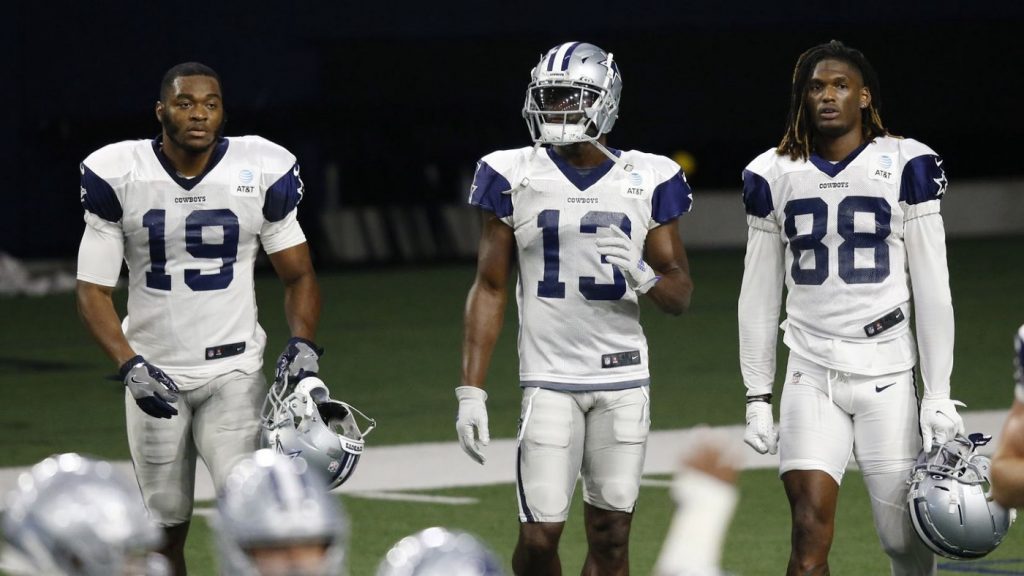
The Trends:
Cowboys are averaging 49 pass attempts per game (1st in NFL)
Cowboys are 3rd in dropped passes (13 total)
Prescott averaged 5.4 passes of 20 or more yards per game (2nd in NFL)
The Takes:
Out goes Dak Prescott, in comes Andy Dalton. This is a perceptible downgrade and there aren’t any two ways about it.
However, Prescott’s ridiculous production wasn’t only because of his impressive talent. There were situational factors at play that still exist, namely the defense’s inability to stop opposing teams from scoring. The real question is deciphering the pecking order of the “big three” the Cowboys possess at wide receiver.
Amari Cooper:
Drafters have to be happy with what they’ve gotten from Cooper. Notoriously inconsistent, the former first round pick has accumulated at least 6 receptions and 80 yards in 4 out of 5 contests. It’s not hard to see why: He’s #2 in the league in targets. Dak’s eyes have been glued to his pricey wideout, and that includes the redzone, where Cooper has a 21.7% target share.
However, the argument can also be made that Cooper is underperforming. His true catch rate ranks outside the top-30 despite a meager 7.7 yards per target. He also has 2 drops on the season, an issue that’s hardly new. Perhaps most surprising, is his struggle to achieve the separation on routes that he’s known for, ranking 76th among wideouts in the category,
The Verdict: Cooper has never quite been the prince that was promised, but his ability and pedigree have combined to produce an effective wideout. At this point, the market is likely to overcompensate for the quarterback change, when it’s possible the decline in production is negligable, as Cooper remains the entrenched primary option. HOLD and reevaluate in a couple weeks.
CeeDee Lamb:
Lamb is already the Cowboy’s best wideout. He has received 16 less targets than Cooper, but leads him in receiving yards. Additionally, the Oklahoma standout is occupying 87% of slot snaps, guaranteeing advantageous matchups. He’s also seen 1 more deep target and generated more yards after the catch than Cooper.
The production is no mistake; nobody is in a better position to succeed in this offense than Lamb. What’s more, Andy Dalton has limited rapport with all the Cowboys receivers. There’s no argument for him playing favorites. The guy getting the most separation, with the best combination of yards per target and catch rate, is CeeDee Lamb. Not to mention, there is a projectable bump in usage as the season carries on for the rookie receiver. Health willing, he’s going to get better and assume a larger role.
Verdict: Lamb was well on his way to claiming alpha status among this talented receiver core. He still has low-end WR1 in his range of outcomes with Dalton, and I sniff a BUY opportunity due to the perceived volatility of this offense.
Michael Gallup:
Oh Cowboys, what have you done? Gallup could be the #1 guy on some NFL teams, but here he is, cast as the #3. And when I say “cast”, that’s exactly what I mean. There’s no argument for Cooper definitively being better, not when Gallup out-performed him last season. However, the self-scouting done by the team’s coaches has relegated the 3rd-year wideout to the least desirable role between himself, Lamb, and Cooper. While running the most routes out of any receiver in the league, Gallup is garnering just 5.6 targets per game.
The one silver lining is the Colorado State product’s usage downfield, ranking 3rd in the NFL in yards per reception. However, this positive can also be spun as a negative. Gallup and Lamb are receiving an equal number of targets 20 or more yards downfield, despite Gallup’s far higher yards per target. In other words, regardless of being the slowest of the 3 wideouts, Gallup is operating as a decoy to clear out space for his more YAC-friendly teammates, while they still collect on roughly the same amount of downfield targets
Verdict: With the insertion of Dalton, it’s safe to project some drop in efficiency, and the passing volume will have to come back to reality eventually. Gallup such a volatile commodity, that any additional volatility makes him borderline unrosterable. If Dalton decides to throw contested jump balls down the sideline more often than his predecessor, Gallup is in luck. Unfortunately, that is unlikely. DROP.


